Achondroplasia is a genetic condition known as short stature in individuals, affecting one in every 15,000 to 40,000 live births worldwide. The condition can affect anyone, regardless of gender or ethnicity, and is known to be more common in older paternal age.
What is Achondroplasia?
Achondroplasia is a genetic condition that specifically inhibits bone growth. This leads to shorter than expected arms and legs and a marked disproportion in individuals. It is the most common type of dwarfism observed in humans and is characterized by an autosomal dominant mutation in its genetic makeup.
Achondroplasia, which is understood within the scientific community to be due to dysfunction of the protein called “fibroblast growth factor receptor”, occurs as a result of disruptions in the ossification process of cartilage tissue. This condition is characterized by a marked difference in body proportions and abnormal short stature.
Individuals born with achondroplasia are often characterized by features such as shorter upper arms and legs compared to their lower parts, a large distance between the fingers, small hands and feet, and a relatively large head circumference. However, poor muscle tone or hypotonia is also commonly observed in infants and can delay motor development.
These high-risk individuals are more likely to develop health complications such as spinal cord compression, respiratory obstructions, recurrent ear infections and obesity. It is therefore recommended that children diagnosed with achondroplasia receive regular medical follow-up and be monitored by a specialist doctor to manage any symptoms that arise.
Although achondroplasia is a lifelong condition, with appropriate medical follow-up and management, individuals can lead a healthy and effective life. Early diagnosis and regular follow-up can significantly improve the quality of life of these individuals and prevent possible complications.
What Causes Achondroplasia?
Achondroplasia is associated with a mutation in the FGFR3 gene, which controls bone growth. The FGFR3 protein, which functions to stabilize bone growth in healthy conditions, becomes overactive in achondroplasia, leading to an undue slowing of bone growth.
The main causes of mutation are:
- A mutation in the FGFR3 gene directly inhibits bone development.
- In most cases, the mutation is not inherited from the parents; it appears as a new mutation.
- In rare cases, achondroplasia can be passed from parents to children through dominant inheritance.
- If a parent is a carrier of the mutation, there is a 50% chance that the child will develop achondroplasia.
- The older the father, the more likely FGFR3 mutations are to occur.
What are the Symptoms of Achondroplasia?
Achondroplasia can present with different symptoms in children and adults. Careful examination of physical characteristics and developmental traits can reveal the presence of this genetic condition. Here are the symptoms commonly seen in individuals with achondroplasia:
- Short stature: The most striking symptom is a lower than expected overall body height.
- Shortness of limbs: There is a marked shortening of the limbs, especially the upper arms and thighs.
- Large head and prominent forehead: A larger than normal head circumference and a prominent forehead are typical features.
- Short fingers: There may be a wide separation between the fingers and the fingers may be short.
- Flattened nasal bridge: This feature of facial structure is associated with retarded development of the mid-face region.
- Delayed motor skills: Infants and young children may have slowed development of motor skills.
- Muscle weakness and joint laxity: This can limit mobility and prevent children from being active.
In the long term, achondroplasia can have the following effects:
- Back and leg pain: Pain can be caused by abnormalities in the bones and joints.
- Breathing difficulties: Abnormalities in the structure of the rib cage can make breathing difficult.
- Obesity: The risk of obesity may increase due to restricted mobility and metabolic factors.
- Ear infections: Recurrent infections may occur due to structural features.
- Curvature of the spine: Kyphosis or scoliosis such as spinal deformities may develop.
- Hydrocephalus: Excessive fluid accumulation in the brain can be seen in some cases.
- Sleep apnea: Abnormalities in the airways can make it difficult to breathe during sleep.
Achondroplasia is a complex condition that requires a multidisciplinary approach to diagnosis and management. When these symptoms are observed, the child’s condition should be evaluated by a qualified health professional. Early diagnosis, appropriate treatment and regular follow-up are crucial in managing this condition. Patients with achondroplasia may require customized treatment and support to improve their quality of life and reduce potential complications.
How is Achondroplasia Diagnosed?
The diagnosis of achondroplasia is usually based on observation of distinctive physical features and genetic testing. Here are the stages of the diagnostic process:
Physical Examination:
The first step in individuals with suspected achondroplasia is a detailed physical examination. The doctor assesses characteristic physical signs such as short stature, short arms and legs, large head and forehead. In addition, possible abnormalities in the spine, chest and joint structure are examined.
Family History and Genetic Counseling:
The individual’s family health history is assessed, particularly for the presence of achondroplasia or other genetic conditions in parents or family. Genetic counseling is important to understand the inheritance pathways of the condition and to identify risks among family members.
Imaging Tests:
Imaging tests such as X-rays, ultrasound or MRI are used to examine the structure of the bone and growth plates in detail. These tests can show typical bone features that support a diagnosis of achondroplasia.
Genetic Testing:
Genetic testing is performed to detect specific mutations in the FGFR3 gene. This test is critical to confirm the diagnosis because mutations in the FGFR3 gene are the most common cause of achondroplasia.
Diagnosis in Pregnancy:
During pregnancy, ultrasound can be used to detect abnormalities in the fetal bone structure. In advanced cases, fetal genetic testing with DNA tests can be performed to determine whether the baby has achondroplasia.
The diagnostic process requires a customized approach for each individual. The severity of symptoms varies according to factors such as the age and health status of the individual. Once diagnosed, a treatment and management plan is developed based on the needs of the individual and their family.
Treatment of Achondroplasia
Treatment for achondroplasia focuses on managing the symptoms caused by this genetic condition and preventing possible complications. While there is no specific cure, early intervention and individualized treatment plans can significantly improve the quality of life of individuals with achondroplasia.
Supportive Therapies:
In achondroplasia, physical therapy improves mobility by increasing muscle strength and flexibility, while occupational therapy facilitates the independent performance of daily tasks. Both therapies aim to improve the individual’s quality of life and include
- Physical Therapy: Muscle strengthening, flexibility exercises and movement coordination.
- Occupational therapy: Daily living skills, self-care and adaptation techniques.
- With regular sessions, individuals can lead a more active and comfortable life.
Orthotics and Supportive Devices:
- Orthotics are used to provide support, especially in the leg and foot area, thus improving gait and posture.
- Special shoes and insoles offer solutions to foot deformities and walking problems.
Surgical Options:
- Some conditions, such as leg curvature and disproportionate shortness of the extremities, may require surgical intervention.
- Limb lengthening procedures can be performed to lengthen bones and correct disproportionate growth.
- Spinal curvatures and other skeletal problems can be treated surgically.
Individualized Treatment Plan:
- Treatment for achondroplasia should be customized to the needs of the individual. This requires regular communication and collaboration between the family and the treatment team.
- Regular follow-up and assessment is important to monitor the effectiveness of the treatment plan and the individual’s progress.
At each stage, all available treatment and support options need to be carefully considered to improve the individual’s quality of life and cope with the challenges associated with achondroplasia. The main goal in the treatment of achondroplasia is to maximize the physical health of the individual and provide them with the best possible living conditions.
What You Need to Know About Achondroplasia (Conclusion)
Achondroplasia is a globally rare genetic condition characterized by short stature and a disproportionate body structure. This condition manifests itself with noticeable physical characteristics from childhood and can lead to various health problems later in life. Here is a summary of what you need to know about achondroplasia:
- Achondroplasia is caused by a mutation in the FGFR3 gene, which causes bones to be shorter than normal.
- Physical features provide important clues for diagnosis, including short stature, short limbs, large head and prominent forehead.
- The diagnosis can be made with a thorough physical examination, family history, imaging tests and genetic testing.
- Treatment focuses on alleviating symptoms and preventing complications, and the individual’s quality of life can be improved with customized treatment plans.
- Physical therapy, use of orthotics and surgical interventions when necessary are effective methods in the management of achondroplasia.
- Achondroplasia is important for genetic counseling, family planning and risk management.
- Early diagnosis and regular follow-up are critical for individuals with achondroplasia and can improve quality of life.
As each individual’s experience is different, the management and follow-up of achondroplasia should be individualized. Families and health professionals should have access to resources and information to manage the condition. With multidisciplinary treatment approaches and community support, individuals with achondroplasia can lead healthy and effective lives. Beyond having a genetic trait, this condition should be seen as part of individual differences and each person’s unique journey.

